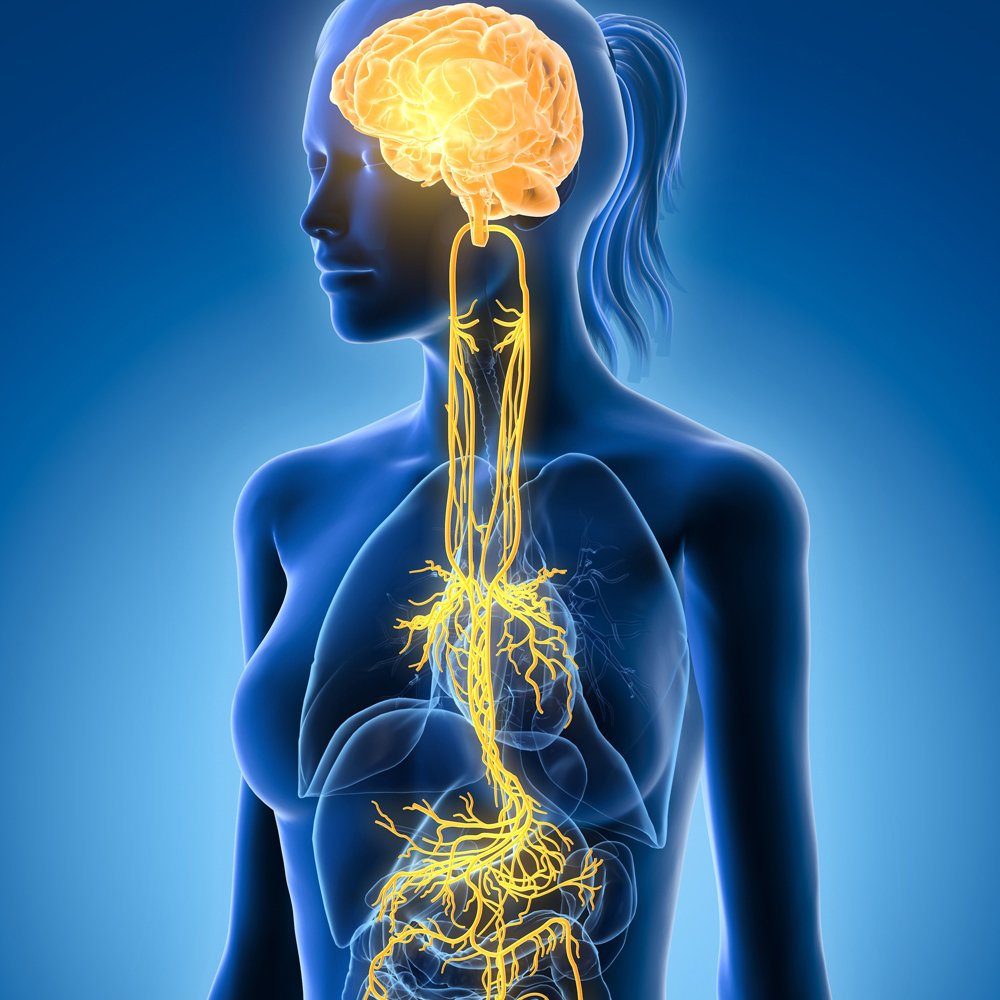
The Science Behind the
Bamboo Breath
Grounded in science, the Bamboo Breath harnesses the power of deep, slow exhalations to enhance mental and emotional well-being. Discover the research behind its benefits and effectiveness.
The Benefits of Bamboo Breath
The Bamboo Breath is specifically designed to help users practice long, slow exhalations, which activate the vagus nerve, a cranial nerve that plays a critical role in regulating the parasympathetic nervous system. The parasympathetic nervous system is responsible for the body's "rest and digest" functions and counteracts the stress response induced by the sympathetic nervous system.
Studies have shown this activation of the vagus nerve leads to numerous benefits, including reduced stress, anxiety, and depression, as well as improved cardiovascular health, better attention, and self-regulation.
The Bamboo Breath helps you:
Reduce stress: Long, slow exhalations have been shown to reduce stress by shifting the balance of the autonomic nervous system towards the parasympathetic side.
Relieve anxiety: Research has indicated that extended exhalation can reduce anxiety by promoting a sense of calm and relaxation.
Improve cardiovascular health: By stimulating the parasympathetic nervous system, Bamboo Breath may contribute to better cardiovascular health, as evidenced by improved heart rate variability (HRV).
Enhance focus and attention: Long, slow exhalations have been linked to improved attention and self-regulation, resulting in better cognitive performance.
Reduce inflammation: Activation of the parasympathetic nervous system has been associated with a decrease in inflammation, as it helps to modulate the body's immune response and reduce the production of pro-inflammatory cytokines.
Improve sleep: Stimulating the parasympathetic nervous system can lead to better sleep quality by promoting relaxation and reducing stress, which are essential factors for a restful night's sleep.
Enhance digestion: The parasympathetic nervous system plays a vital role in digestion by stimulating the release of digestive enzymes and promoting peristalsis, the muscle contractions that move food through the gastrointestinal tract.
How Bamboo Breath Works
Bamboo Breath assists users in extending their exhalations by providing gentle resistance, ensuring that the breath is expelled slowly and evenly. By using Bamboo Breath, users can train themselves to develop a consistent and effective breathing pattern, reaping the benefits of activating the parasympathetic nervous system on demand. We invite you to experience the science-backed benefits of Bamboo Breath for yourself and start your journey towards improved mental and emotional well-being.
References
The following references were published in peer-reviewed scientific journals and authored by researchers from reputable scientific institutions.
Brown, R. P., & Gerbarg, P. L. (2005). Sudarshan Kriya yogic breathing in the treatment of stress, anxiety, and depression: Part I—Neurophysiologic model. Journal of Alternative & Complementary Medicine, 11(1), 189–201. https://doi.org/10.1089/acm.2005.11.189
Creswell, J. D., Taren, A. A., Lindsay, E. K., Greco, C. M., Gianaros, P. J., Fairgrieve, A., ... & Ferris, J. L. (2016). Alterations in resting-state functional connectivity link mindfulness meditation with reduced interleukin-6: A randomized controlled trial. Biological Psychiatry, 80(1), 53–61. https://doi.org/10.1016/j.biopsych.2016.01.008
Goldin, P., & Gross, J. (2010). Effects of mindfulness-based stress reduction (MBSR) on emotion regulation in social anxiety disorder. Emotion, 10(1), 83–91. https://doi.org/10.1037/a0018441
Lehrer, P. M., & Gevirtz, R. (2014). Heart rate variability biofeedback: How and why does it work? Frontiers in Psychology, 5, 756. https://doi.org/10.3389/fpsyg.2014.00756
Ma, X., Yue, Z. Q., Gong, Z. Q., Zhang, H., Duan, N. Y., Shi, Y. T., Liu, W. Y., & Li, Y. F. (2017). The effect of diaphragmatic breathing on attention, negative affect and stress in healthy adults. Frontiers in Psychology, 8, 874. https://doi.org/10.3389/fpsyg.2017.00874
Porges, S. W. (2007). The polyvagal perspective. Biological Psychology, 74(2), 116–143. https://doi.org/10.1016/j.biopsycho.2006.06.009
Russo, M. A., Santarelli, D. M., & O'Rourke, D. (2017). The physiological effects of slow breathing in the healthy human. Breathe, 13(4), 298–309. https://doi.org/10.1183/20734735.009817
Seppälä, E. M., Nitschke, J. B., Tudorascu, D. L., Hayes, A., Goldstein, M. R., Nguyen, D. T. H., ... & Davidson, R. J. (2014). Breathing-based meditation decreases posttraumatic stress disorder symptoms in U.S. military veterans: A randomized controlled longitudinal study. Journal of Traumatic Stress, 27(4), 397–405. https://doi.org/10.1002/jts.21936
Steffen, P. R., Austin, T., DeBarros, A., & Brown, T. (2017). The impact of resonance frequency breathing on measures of heart rate variability, blood pressure, and mood. Frontiers in Public Health, 5, 222. https://doi.org/10.3389/fpubh.2017.00222
Streeter, C. C., Gerbarg, P. L., Saper, R. B., Ciraulo, D. A., & Brown, R. P. (2012). Effects of yoga on the autonomic nervous system, gamma-aminobutyric acid, and allostasis in epilepsy, depression, and post-traumatic stress disorder. Medical Hypotheses, 78(5), 571–579. https://doi.org/10.1016/j.mehy.2012.01.021
Tang, Y. Y., Ma, Y., Wang, J., Fan, Y., Feng, S., Lu, Q., ... & Posner, M. I. (2007). Short-term meditation training improves attention and self-regulation. Proceedings of the National Academy of Sciences, 104(43), 17152–17156. https://doi.org/10.1073/pnas.0707678104
Thayer, J. F., & Lane, R. D. (2009). Claude Bernard and the heart-brain connection: Further elaboration of a model of neurovisceral integration. Neuroscience & Biobehavioral Reviews, 33(2), 81–88. https://doi.org/10.1016/j.neubiorev.2008.08.004
Tsuji, H., Venditti, F. J., Manders, E. S., Evans, J. C., Larson, M. G., Feldman, C. L., & Levy, D. (1996). Determinants of heart rate variability. Journal of the American College of Cardiology, 28(6), 1539–1546. https://doi.org/10.1016/S0735-1097(96)00342-7
Zaccaro, A., Piarulli, A., Laurino, M., Garbella, E., Menicucci, D., Neri, B., & Gemignani, A. (2018). How breath-control can change your life: A systematic review on psycho-physiological correlates of slow breathing. Frontiers in Human Neuroscience, 12, 353. https://doi.org/10.3389/fnhum.2018.00353
Zope, S. A., & Zope, R. A. (2013). Sudarshan Kriya Yoga: Breathing for health. International Journal of Yoga, 6(1), 4–10. https://doi.org/10.4103/0973-6131.105935



